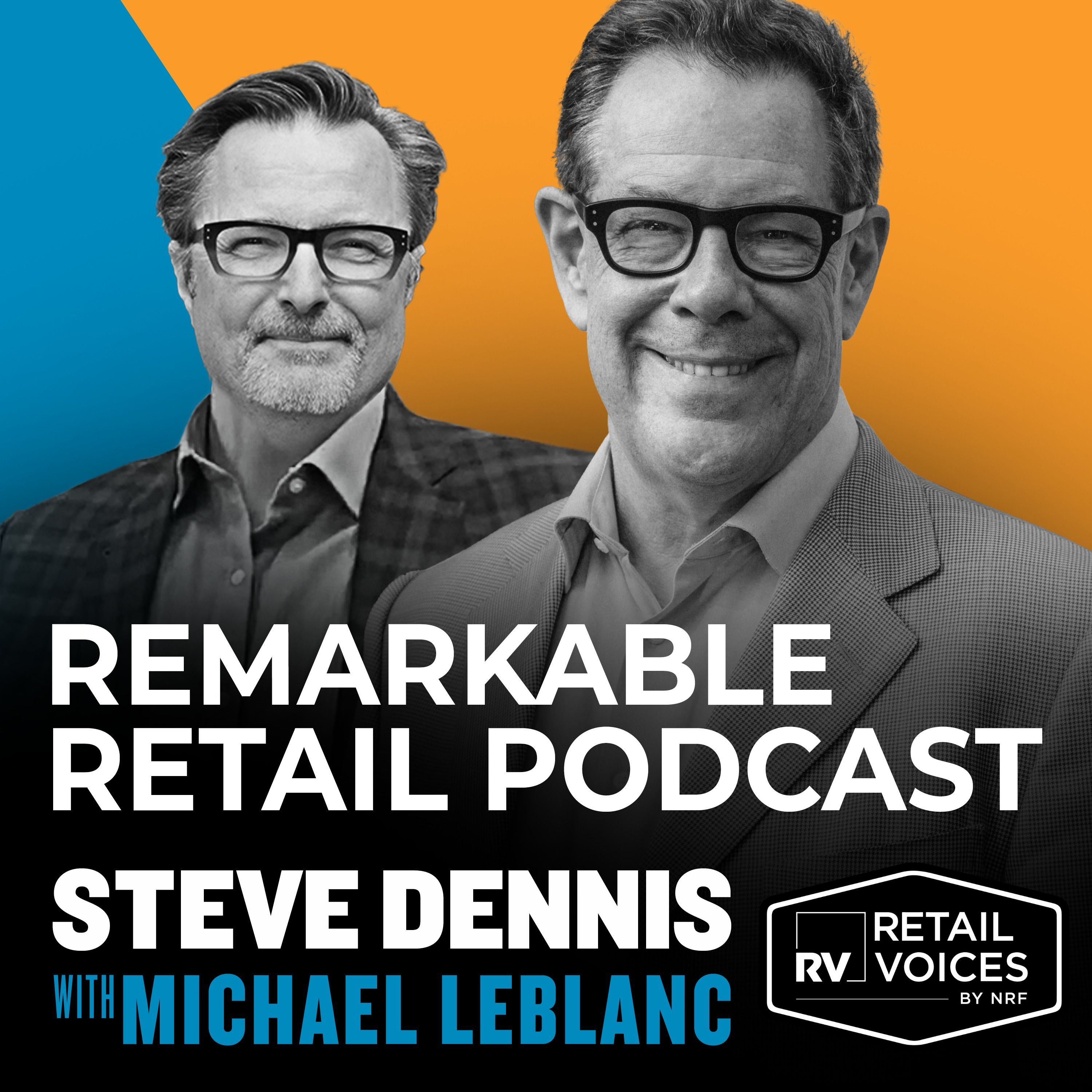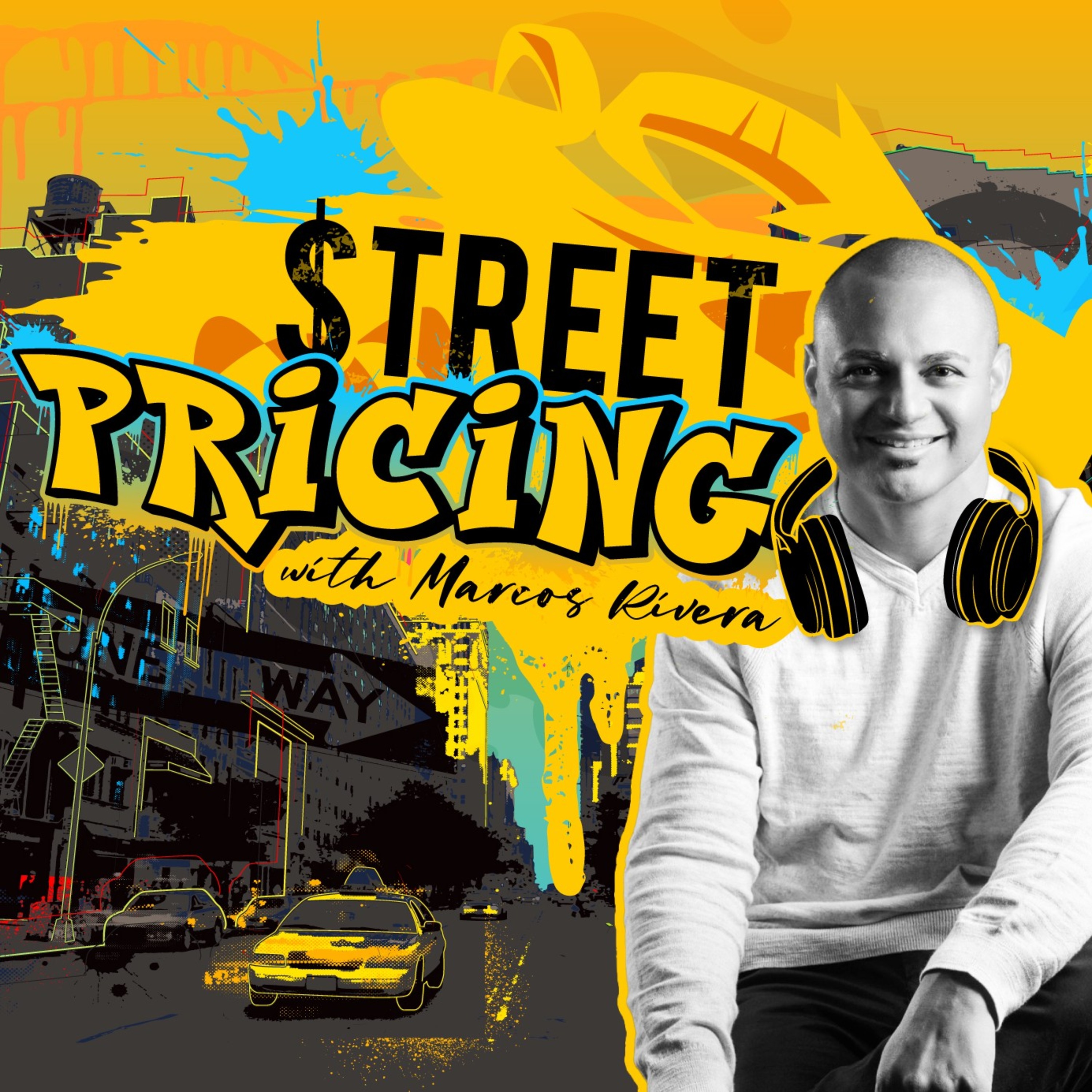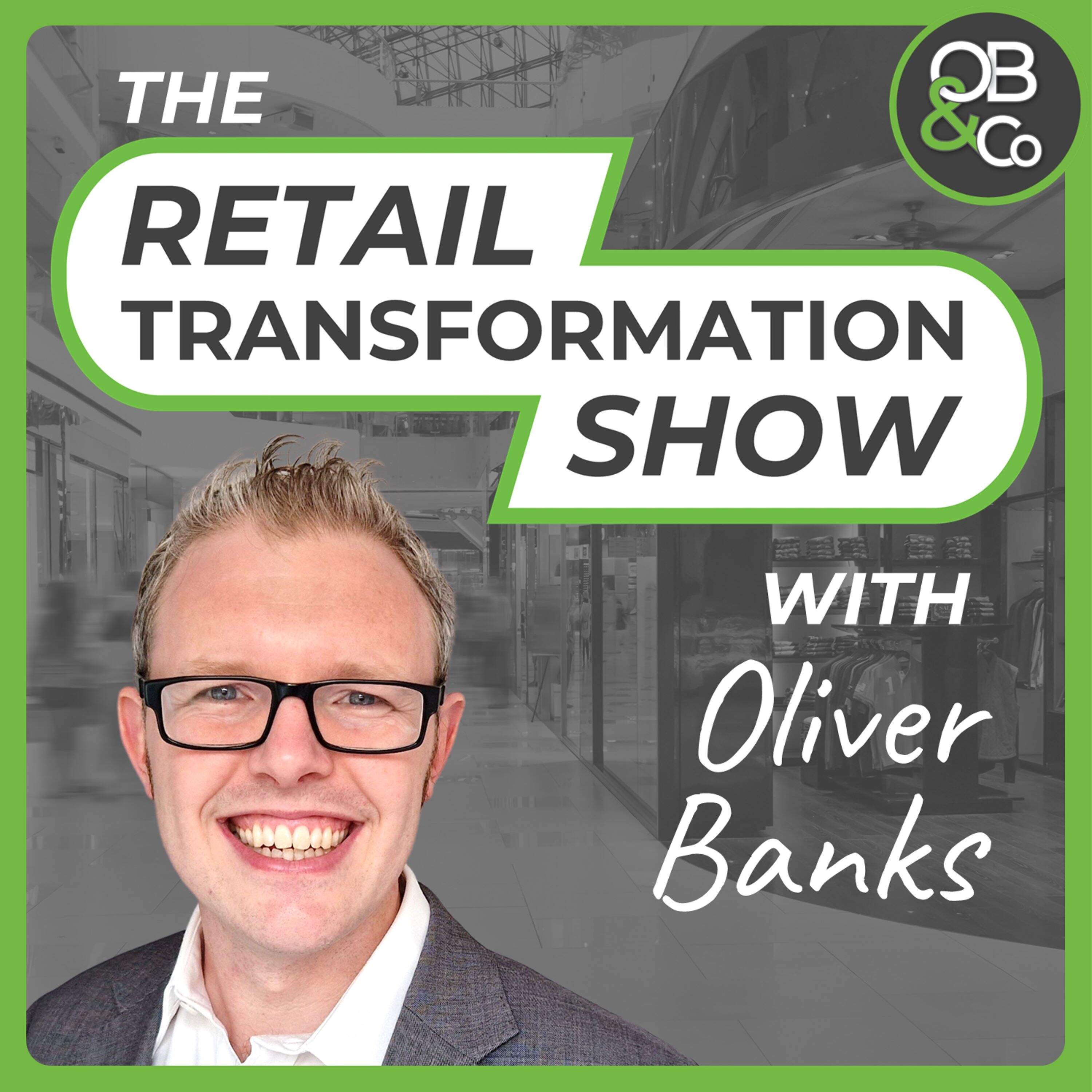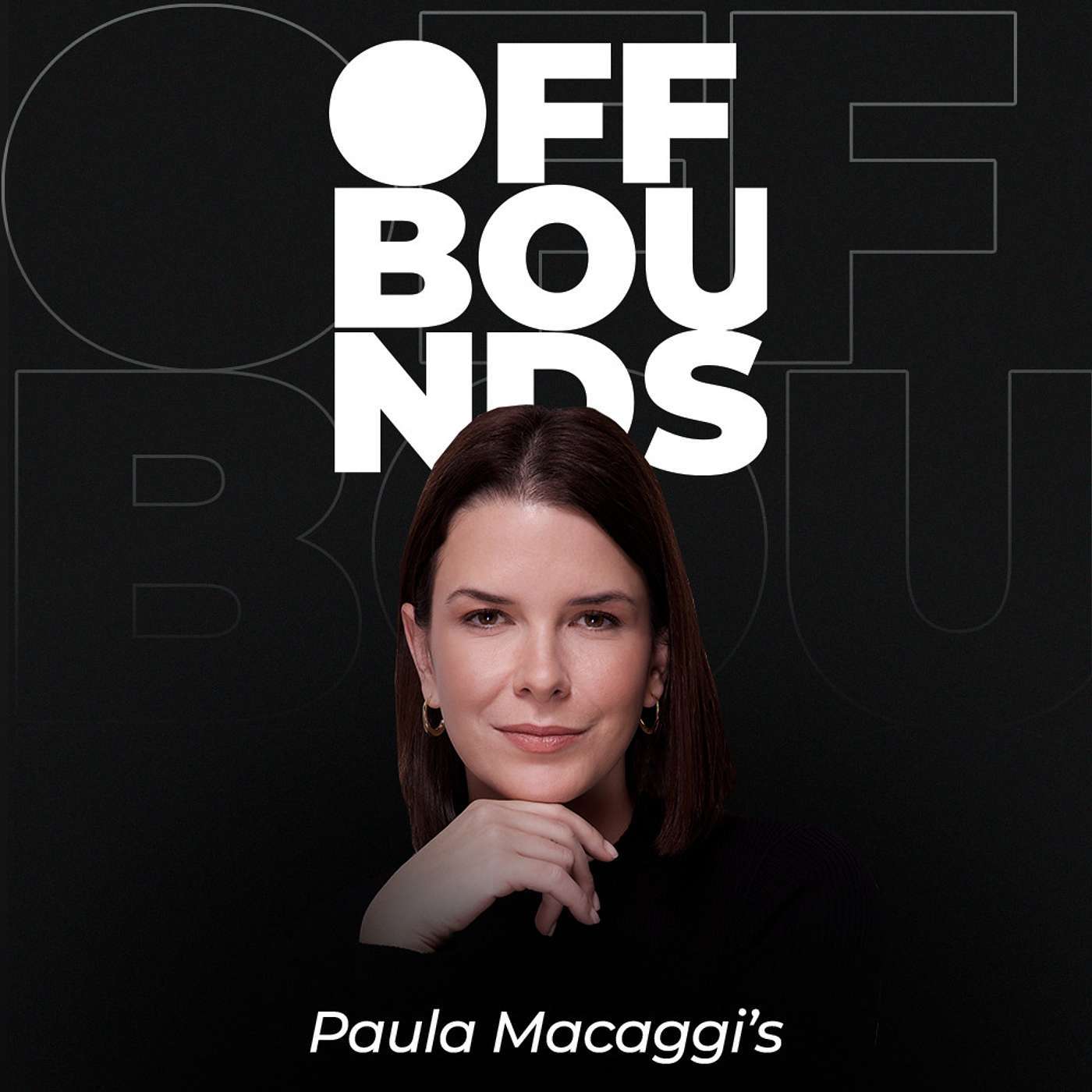
Pricing Heroes: The Retail Pricing Podcast for Practitioners & Executives
Pricing Heroes: The Best Retail Pricing Podcast for Practitioners and Executives
Your go-to pricing podcast for transforming strategy, boosting margins, and leading with confidence.
Pricing Heroes is the leading retail pricing podcast for pricing practitioners and retail executives focused on building smarter strategies, protecting margins, and earning customer trust. Each month, we feature exclusive interviews, case studies, and practical insights to help you implement the most effective pricing strategies for today’s retail environment.
Whether you're managing promotional calendars, navigating price perception, or scaling AI-powered pricing systems, Pricing Heroes offers the expert guidance and real-world perspective you need to lead with confidence.
🎙 Each episode includes:
- Expert Interviews: Candid conversations with top pricing professionals and retail innovators
- Case Study Analysis: Behind-the-scenes strategy breakdowns from across the industry
- Actionable Takeaways: Practical insights you can apply immediately in your organization
We explore the full landscape of pricing in retail — spanning e-commerce and in-store, global brands and regional players, and categories from fashion and grocery to electronics and beyond. Topics include:
- Innovative pricing technologies and emerging trends, like AI-powered pricing platforms
- Data-driven consumer behavior analysis
- Strategic solutions to complex pricing challenges
- Tactics to boost profit margins and market share
- Pricing topics making headline news
- Building and transforming pricing functions
Join a growing community of pricing professionals and industry leaders who tune into Pricing Heroes — the trusted pricing podcast for anyone shaping the future of retail strategy.
🗓 New episodes drop the last week of every month.
📲 Listen on Spotify, Apple Podcasts, Google Podcasts, or your favorite platform.
Sponsored by Competera — the leading pricing platform empowering retailers with AI-driven, customer-centric pricing solutions that maximize profitability while strengthening customer loyalty.
Pricing Heroes: The Retail Pricing Podcast for Practitioners & Executives
The Future of Retail Pricing Powered by Al with Alex Galkin
Our guest this week is our very own Alex Galkin, Founder & CEO of Competera. We invited Alex on the podcast to discuss a recent report on the “Future of Pricing: How AI is Transforming Retail Pricing” published by Coresight Research.
In this episode, Alex discusses the shift he's seeing towards AI-powered price optimization in retail, highlights the differences in AI capabilities currently being deployed in real-world scenarios, explains why retailers should trust AI to empower their pricing teams, and provides helpful tips for retailers trying to determine if AI pricing is right for them and what they can do to prepare for the adoption of AI tools.
Report: Future of Pricing: How AI is Transforming Retail Pricing
----------
Get your free copy of Get Ready for the Future Of Pricing with our A-Z Guide.
For more information about AI pricing solutions, check out our Corporate sponsor Competera.ai.
Aaron: Hello and welcome to Pricing Heroes, a podcast sponsored by Competera. This is a series of interviews with the best-in-class retail pricing experts driving bottom-line metrics for major retail brands and the industry as a whole. We created this podcast to give pricing professionals a space to share their experiences and insights.
Today, we have a special guest joining us from the tech side of retail pricing. Our guest is our very own Alex Galkin, founder and CEO of Competera. We invited Alex on the podcast to discuss a recent report on the future of pricing published by Coresight Research. Alex, it's great to finally have you on the show.
Alex: Thank you, Aaron, for inviting me. I'm super excited, and you're right. We created this space for pricing professionals to share their achievements and thoughts, and I really appreciate being here today.
Aaron: We’re excited to have you. Before we jump into the pricing report, Alex, for those in our audience who don't know you, can you begin by telling us about yourself and how you eventually went on to found Competera?
Alex: Long story short, I am not originally a pricing manager or pricing professional; I am an engineer, born and raised in Ukraine, where I earned two degrees in computer science and medical technology. My diploma was around the electronic nose, where I actually trained a computer to “smell.”
Fun fact: back in 2004–2005, when it took two years to build that diploma, I started using the first neural networks. That was seven years before Google acquired distributed neural networks and started thinking about AI in the future. Now we see that AI is here, and it started a long time ago.
Since then, I worked in a Big Four company, where part of my job was evaluating a lot of projects that huge consulting companies were doing for multiple retailers and brands. The first time I faced those issues, I realized that advising on prices using Excel is not enough, and that simple elasticity calculations from statistics are also far from the state of the art that retail really requires.
I spent 2006 to 2014 there. Imagine that all the solutions on the market couldn’t allow retailers to be as personalized and customer- and shop-centric in their pricing as needed. That is how the idea came to my mind: machine learning could probably solve this problem. Second, cloud compute was rising and could make the compute more acceptable. And we knew pricing science. I wanted to connect all three dots and make the most efficient pricing software in the market.
Aaron: So it was improvements in neural network capabilities, the cost of compute, and access to large datasets that made it possible.
Alex: Exactly. We actually started in 2014 by collecting and mapping data, which we continue doing. I still don’t know who will win the car market, but autonomous vehicles will definitely be led by Tesla because they started collecting data back in 2018. Honestly, Aaron, this year I first drove Autopilot in a Tesla Model 3 in Palo Alto, and it’s crazy.
I used BMW’s system before, and when you turn on the signal to change lanes, BMW usually waits for enough space on the right to make the lane change. You know what Tesla does? Tesla increases speed and then changes lanes, which is exactly how most drivers behave. It’s a safer way to increase speed and then change lanes rather than slow down and wait. This is a very simple example of how important data is.
Frankly, the first version of what really works at scale was only presented in 2018. Now we have a versioned algorithm that still doesn’t have a name. I hope one day we will announce it, but for now it’s just V15.
Aaron: Can you go into a little more detail on what pricing looked like prior to the introduction of more sophisticated tools like AI pricing?
Alex: Of course. A lot of evolution has happened. The first stage, as with all software in the market, was price automation. The software focused on relatively quick delivery of the price to the storefront through automation, where the logic behind those suggestions was “what if” logic. If my cost is this and my margin target is that, then make the price here. It didn’t consume any external data points.
Further down, it became more local, concentrating on data such as sell-through rate. If the sell-through rate was super slow, then maybe it was time to decrease the price. But this was still manual scripts. You would go to IT to rebuild the logic and then send it if this was an automation system. Many retailers, even big ones, still use Excel, where each category manager or brand manager uses their own art and science, without knowledge about performance, just tweaking formulas in Excel.
Later, a new class of software started using elasticity. In the minds of retailers—and with consultants’ advice—came the realization that not all products are similar. It makes no sense to have the same pricing logic for every item. Items differ in the assortment, so elasticity exists, and we need to play around with that. It was very manual and long work. Many teams focused on elasticity calculations. Usually the internal data of the customer is not enough to identify elasticity, so we used approximate elasticity, like how people react to milk prices in London, and very simple elasticity approaches.
It was still price automation with some consulting support and the idea that not all products are equal. We started using ABC/XYZ analysis to say, this product is a revenue generator, this is a traffic generator, and so on, and then created slightly different pricing scenarios—again, manual rules—by assortment, plus some elasticity. But at a certain point, you have so many rules and such deep hierarchy that you get lost. It becomes almost impossible to manage unless you hire a huge team to manage it for you, which makes the operational cost of price changes insane. The flexibility of the whole system is very low. In seven or eight months, it becomes impossible to understand why one rule overrode another and who created which rule, and why it should be there. That triggered me. It shouldn’t be like that.
Machine learning is capable of decreasing this pressure on humans. People are created for more creative work. We need them to analyze and point direction rather than create multi-layered hierarchy rule engines for price instantiation. Then we came to the AI world, where we say, here is the whole situation in the market and what happened in the past; please figure out the optimal price position.
Aaron: Turning to AI pricing, the Coresight report highlights a massive shift toward AI-based pricing solutions in retail. From your experience at Competera, how has the approach to pricing changed in the retail industry over the past few years with the emergence of AI? Has it been a seamless shift where retailers just plug and play with AI, or has it been more gradual? What are the benefits and challenges that have arisen? What has that shift looked like over the past four or five years?
Alex: Aaron, I think five years is too ambitious. AI is really here in just the last year or two. I know that in this report a lot of retailers say they’re using AI at certain points, but mostly it was used for personalization or more robust category segmentation. I don’t agree with points like “92 percent are using AI for pricing.” For me, using AI for pricing means a pure algorithm that can identify context and calculate. Price elasticity is just one factor—or even not the factor—because elasticity is a very high-level metric that has nothing to do with a local store. For me, true machine-learning pricing is just arriving now. We work with Fortune 100 companies, and before us they were still using Excel. The shift is happening now, and that excites me.
The big guys like Amazon did experiments decades ago, but mostly in e-commerce. I don’t know any offline retail doing it properly now except those using us. The shift is toward trusting that there should be more than one factor, beyond cost. Historically, the three factors used by automation software were cost, competitors, and business metrics like margin or revenue targets. Those can be done manually or with statistical methods. I don’t think that was true machine learning. Now, with solutions like Competera and others, we can reconsider up to 20 factors in real time. You can see the impact and forecast the effect after you change the price. You don’t have to wait a week to see if it makes sense; you can see it immediately in the dashboard, at any level.
If you have a channel like Amazon or online, customer behavior is different, so the price should be different. Machine learning can re-evaluate and re-weight factors inside each channel. We do it at the store level. A store in the middle of Chicago and a store in the middle of Kyiv are two different stores, even if you sell the same products. We take into account GDP, local factors, and so on. It is rising now.
Back in 2014–2015 we did the calculations. The cost of compute was insanely huge. Even for 7,000 products, we needed to process around 7–10 terabytes of data to recommend prices. It was insanely expensive. Hiring a whole room of analysts was still cheaper, even with limitations. Now, it’s becoming acceptable. Now is the time.
Aaron: Right. So the algorithms essentially help with products not only based on locality, but also on seasonality and behavior in association with other products that are being purchased by specific types of people at specific locations. These are a few of many factors taken into consideration that elasticity-based pricing could not account for.
Alex: Yes. We have a small white paper on the difference between elasticity-based pricing and contextual AI. You can Google “contextual AI pricing” and find how it differs, because it learns and adapts to the environment. Elasticity assumes that all other factors except price are fixed. That’s a huge, groundbreaking difference. Our world is not built like that. There are many more factors, as you mentioned: halo effects, nearby stores, local events, weather, elections, currency changes, and more.
In 2014 we started building our Competera data lake, collecting information that can change customer behavior. Then we map the retailer’s data with this historical dataset and say, maybe this is why you have those spikes or changes in sales, because we know that on that day one or three years ago there was a situation like this. This is how we try to predict how situations will influence the future. It’s far beyond elasticity itself.
Aaron: When we talk about AI-powered pricing tools, clearly they exist to address challenges customers face. In the Coresight report, more than half of respondents said they faced difficulty executing at least 10 percent of their promotional campaigns, and they were mispricing 10 percent of their products in any given category. Why do you think pricing analysts face these challenges, and how can they improve their approach to pricing and promotion management?
Alex: More art than science? These challenges happen because many decisions are driven by a will to do something from the vendor’s side—the suppliers selling products to the retailers. From our observations, promotions raise cannibalization and can be a huge disaster for retailers.
Originally, promotions were created for competition between brands, not primarily for customers. Big corporations run promotions to make their products look better in customers’ eyes, and they use the retailer as the place for that. That’s why, in our observation, promotions create difficulties. I think respondents were even optimistic. Realistically, I think 20–30 percent of promotions are hard to explain in terms of impact. They don’t have accurate post-promotion waterfall analysis. It’s not 10 percent; my gut feel is 20–30 percent of discrepancies are created by strange promotion activities.
AI helps recover margin you usually lose when you start promoting. On a shelf, you have a premium product and mid-tier products with good margin but lower sales. If a big brand starts a 30 percent promotion, the premium product’s price comes closer to brand B or C, and it cannibalizes. The promotion is negotiated with the vendor, who compensates some margin back, but usually retailers lose money on promotions. Promotions are often sponsored by brands, and retailers expect more traffic that will stay and come back after the promotion. When we do proper analysis, you’re often just cannibalizing the category. If you look category-wise, not promo-wise, seven of ten promotions end up with lower gross profit and revenue for the retailer. The hope is those customers will come back later, but how do you track a customer who came for a promotion and then disappeared?
One percent price increase on a basket can mean millions in increased revenue, depending on your scale. The hard work is to find those one-percent opportunities without losing price perception. That’s where AI is beautiful. It can create attractive prices—even sometimes below cost—to drive positive customer feedback and price perception, while splitting margin across the rest of the products that are not as important. Customers who start using tools like Competera see they don’t need to run as many promotions. They become more aggressive in negotiations with vendors, saying they don’t need 30 percent discounts. They can show projections and say 15–20 percent is enough, and they don’t need to cannibalize.
My advice for pricing managers listening: model the promo effect. Vendors often promise over-100-percent “back bonuses” because they promise them to all retailers, knowing some will not achieve targets. Model the potential impact and cannibalization in the category before you agree to any promotion, especially aggressive ones like 20–30 percent discounts on your KVI items.
Aaron: One of the most widely cited challenges preventing retailers from adopting AI for pricing is a lack of trust in AI models. Given that pricing is crucial to any business, it’s not surprising retailers would be cautious about embracing new technology, particularly when they see it as a black box. To what degree do you think retailers should trust AI in their pricing practices?
Alex: This is a huge point. “AI” is a very general term. We use deep learning models—specific ones that are faster—because usual deep learning can be too slow. In big retail, the number of transactions and the speed of turnaround can be too fast for slow models. Some people claimed to be using deep learning without transparency, which created a buzz that AI is not explainable. Partially that is true. If it’s real deep learning, it is a black box. Sam Altman has said they don’t always know what’s happening inside, so they create guardrails. That is the nature of AI; if you open the box, it’s no longer deep learning, it’s rules.
What you can do is put guardrails: do not go there, consider this, and then see how it behaves. That is exactly how Competera was designed. Because we use contextual AI, we try to open the box. We always show why prices changed. We show five or six key reasons and ask the model, in effect, why it suggested the price change. The answer is clear: we see cannibalization through competition, seasonality with higher impact than competition, and so on.
Humans think linearly—“it’s because of this one thing.” AI is weighing many factors to achieve an optimal price position. Some factors might have a 40 percent impact from competitive cannibalization, 20 percent from location, store distribution issues, and more. There are many factors. We can show all of them, but we highlight three to five key drivers behind a price change, because it’s a many-to-one problem.
AI first takes your direction—do you want more revenue or gross profit?—then every day or week it sees how the environment changes and finds the price that best balances those factors. That is simple for regression models, but it’s what is happening. The beauty is leveraging 20 factors. If you ask a category manager why they missed plans, the answer is always “competitors.” It’s hard to argue because how can you check? But many items are not driven by competitors. It’s still the beginning, and many retailers are scared, but AI is now transparent enough. Competera is a good example.
Aaron: That makes me wonder: if a pricing platform like Competera’s is sophisticated enough to consider 20-plus factors and explain why it makes a suggestion, what happens to the role of the pricing analyst?
Alex: The analyst is still needed. Who is not needed anymore? In many retail organizations, pricing is crucial for the business. The “three Ps” exist everywhere: product, price, and place. For services or SaaS companies, this rule applies too. Price is an important lever for any CEO to create revenue or gross profit.
What we try to change—even back in 2014 as a consulting company—is that there should be a specific pricing practice in retail, a specific group, usually reporting directly to the CEO and somewhat independent. It should not sit under commercial, because that creates a conflict of interest. A commercial director sometimes has different interests than a finance director. This function should be independent.
We are trying to move toward automation so you don’t need 150 people. Some retailers think the product is too complicated and category managers can’t use it. First, the product is simple. Second, it shouldn’t be run by category managers anymore. They often don’t have finance education or statistical/analytical background, and they don’t need it. Their job is to find great products at the most affordable cost and discontinue them at the right time. Pricing should be a separate function with specific people who are comfortable with predictive software. You can run forecasts and predictions.
Ten years ago, people did replenishment manually. Even after implementing automated ordering, some people still overrode the system, ordering more and creating overstock. When they investigated, the system was right; people were overriding it. The same happens in pricing. The right time is coming. People are more open-minded and ready to adopt. This should be run by a well-educated category manager who becomes a pricing architect. We advise retailers to create this function. If your pricing is still run by category managers, it’s better not to buy any software for them, because that is not the way.
Aaron: For retailers that are still hesitant about adopting AI-powered pricing solutions, what advice would you give?
Alex: Increase investments in pricing technology and, even more, in data foundations. The world is changing. You will use generative AI for many purposes, even for onboarding new employees and merchants. The conversation will move to speaking with data—conversational data. BI dashboards were strong, but someone had to sit and interpret them and know whether plus 10 percent is good or bad. Now we can move to insights.
Retail’s main problem is the data foundation. Invest in data translation, data pipelines, even AI-specific tables like vector databases. The most valuable asset is customer information: when a person was in your store, what they bought, when, how much they paid, and how much you paid that day. Simple stuff—but we often don’t see that data in retailers, and it will block the future of AI. You might read that AI doesn’t work or that it’s a black box, but mostly the issue is data. If your data is fine—and Google BigQuery or Databricks aren’t foreign words—you are ready for AI.
Aaron: So, is AI pricing for every retailer?
Alex: It’s a good question. Of course not. For example, in luxury retail the main driver is not price. There are not enough observations. AI is a class of algorithms. It’s not magic. If your business doesn’t need it, you don’t need to install it. If you have one product you sell through the whole season and you never mark down, AI won’t help you. If you’re a drop-shipper who always prices just below a top competitor, AI will tell you the same and you can do that in Excel.
There should be a certain maturity stage. You need automated systems in place to go to the AI stage. We call this a maturity map, like autonomous vehicles have levels. The fifth stage is customer-centric pricing where you optimize on a cluster or human cluster to drive LTV. The third stage is demand-based, where we reconsider multiple factors for cost, coverage, and profit. The automated stage means you have rules in place and enough data. The automated system creates the historical dataset so you can go to the first stage. You can’t jump from Excel with no historical data straight to the highest stage.
We don’t work with luxury fashion, for example, because when you buy a Rolex, you probably don’t care about the price; you’re buying the image and the brand. AI pricing is not for all.
Aaron: Looking ahead, what is your vision for the future of pricing in retail? How do you see Competera shaping this future?
Alex: It’s a bright future. There will be a huge decrease in operational expenses to manage pricing properly. Prices will be more adjusted to customer needs in specific locations. It won’t take years to build and maintain. Retail is a very low-margin, complicated business with hundreds of processes. Our vision is to help at least one function be almost fully automated. Our goal is 98 percent automated, meaning only 2 percent of prices should be adjusted manually. All the rest should be set by algorithms. You need just one person who is smart enough to operate the system, even in a billion-dollar organization. Investments are coming into data foundations, and top retailers are already doing this. The train is moving. If you’re not on it, you’re done. It’s not if, it’s when.
Aaron: Does Competera have any particular product or functionality in the pipeline that you’re excited about?
Alex: Yes. We are going to make public a product we call Competera X. It’s a replica of the enterprise AI for small retailers on Google, Amazon, and Shopify. It’s the same engine—a “mini” version of the enterprise product. We piloted it with five different accounts and saw great results. I’m super excited. We don’t want to charge for this product at first. It will be free to use for a certain time.
Aaron: That’s a lot of compute power you’re giving away for free.
Alex: And data collection.
Aaron: Final question. Can you recommend any books, podcasts, or other resources to our pricing community?
Speaker: Probably the best recent book you can find regarding pricing is Highly Effective Pricing, written by my good friend Danilo Zatta, ex-CEO at Simon-Kucher. It’s also worth checking out his previous book, The Pricing Model Revolution.
Aaron: Alex, thank you for being on the show and sharing your insights with us today.
Alex: Thank you, Aaron. Thank you for inviting me. Great job you’re doing.
Aaron: I hope you enjoyed our conversation with Alex Galkin. Be sure to follow and connect with our guest on LinkedIn. For more information about AI pricing solutions, visit competera.ai. Remember to subscribe to the show in your favorite podcast app to ensure you don’t miss future episodes. And please help us spread the word by leaving a five-star review; it helps others discover the show. If you find the insights on the show valuable, I encourage you to check out our Retail Pricing Community on LinkedIn, where you will find pricing experts sharing their expertise and the latest trends. Thanks for joining us on this episode of Pricing Heroes. Take care until next time.
Podcasts we love
Check out these other fine podcasts recommended by us, not an algorithm.

Pricing Evolution Podcast
Brendan Hodge
Impact Pricing
Mark Stiving, Ph.D.
Remarkable Retail Podcast
Michael LeBlanc, Steve Dennis
The Modern Retail Podcast
Digiday
Let's Talk Pricing Podcast
The Professional Pricing Society
Street Pricing with Marcos Rivera
Marcos Rivera
Rooted in Retail
Crystal Vilkaitis
The FMCG Guys
Dwyer Partners
Retail Transformation Show with Oliver Banks
Oliver Banks

